Medical practice management software is a powerful tool in the right hands. If you are already using the software or are just considering different options in the market, stop and do one thing. Before you go clicking around your practice management software (PMS) randomly, ask yourself:
Are you using your PMS to actually grow your medical practice — or just to manage day-to-day chaos?
Whether you're running a busy outpatient clinic, managing a growing small practice, or working as a solo practitioner, there's a world of opportunity inside your software that often goes unused.
This guide walks you through exactly how to use each major feature to its full potential, with real-world examples and actions you can take today to improve efficiency, boost patient satisfaction, and grow your revenue.
Let’s be honest: many medical offices are sitting on goldmines of functionality without ever digging in. So if you’re in the market to:
- Improve workflow and simplify administrative tasks.
- Reduce burnout for staff members and clinicians.
- Streamline consultations, scheduling appointments, and financial management.
- Increase patient care quality and satisfaction.
- Maximize your practice’s revenue
... then read on. You’ll learn how to turn your PMS from a passive tool into an interactive hub for a truly successful medical practice.
Learn how to simplify your practice workflow and free up more time for patients with Medesk.
Open the detailed description >>1. Improve Online Booking with 3 Simple Actions
Online booking is more than just convenience — it’s the front door of your physician practice management system. And if you want to reduce no-shows and scale your reach, this is your first step.
Supercharge your scheduling process with these 3 simple actions.
- Enable prepayment or partial deposits to filter out non-serious patients and improve reimbursement rates. Clearly spell out appointment and cancellation terms in your online reservation policy: for example, that if you cancel less than 24 hours in advance, your prepayment is non-refundable.
Each missed visit costs your clinic an average of $100-200 dollars and a disrupted schedule. If you minimize no-shows, you will save about $7,500 per month.
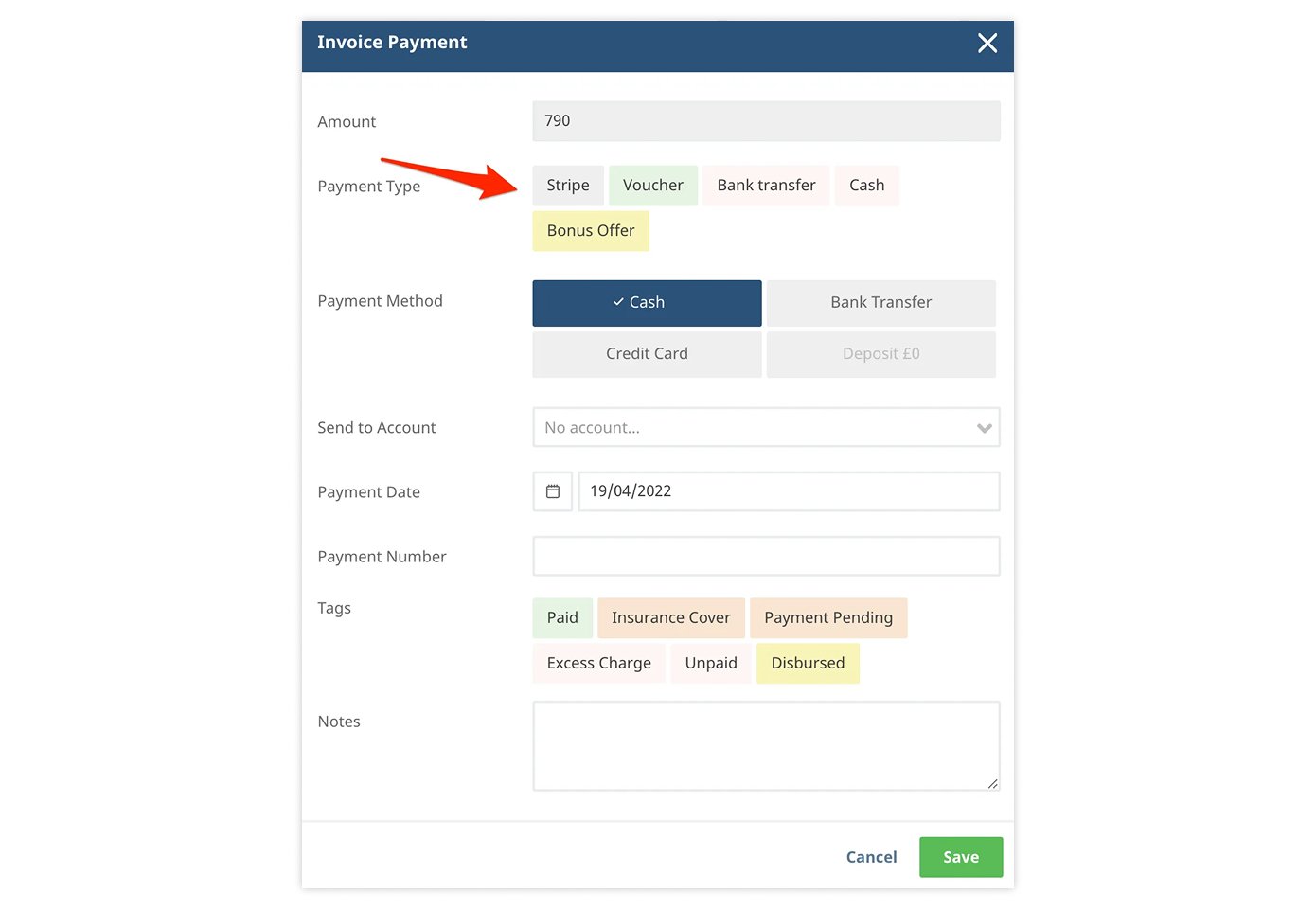
- Use geolocation filters to target patients in relevant cities and countries. This way, your clinicians spend time with real prospects, and you don’t waste money on appointment confirmations of those who weren’t even going to show up.
Sometimes unscrupulous competitors can attack and book all available slots through bots and one-day phone numbers. If you don't have a prepaid and country-based restrictions, you will face a failure situation: real patients won't find free slots for appointments, and you will spend money on sending messages and earn zero.
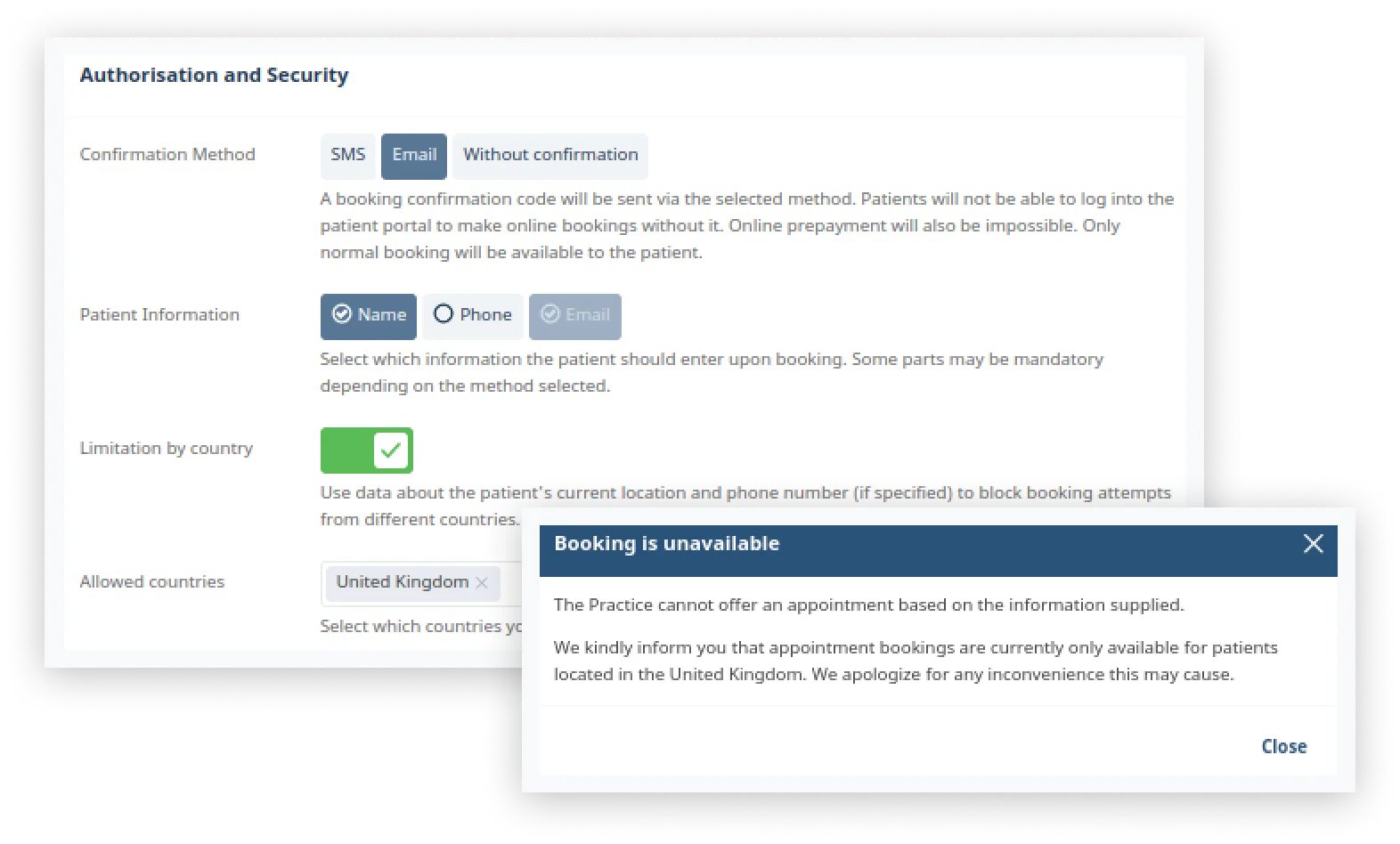
- Set up automated reminders and confirmations via SMS, email, or even WhatsApp using built-in messaging tools. Together with geographical restrictions, mailings not only help to reduce the no-show rate but also to retain regular patients: send special promotions, inform about hot slots for appointments and remind long-time patients about the importance of timely check-ups.
Pro Tip: In Medesk, you can link online booking directly with your financial dashboard and EHR, so you always see the complete patient journey.
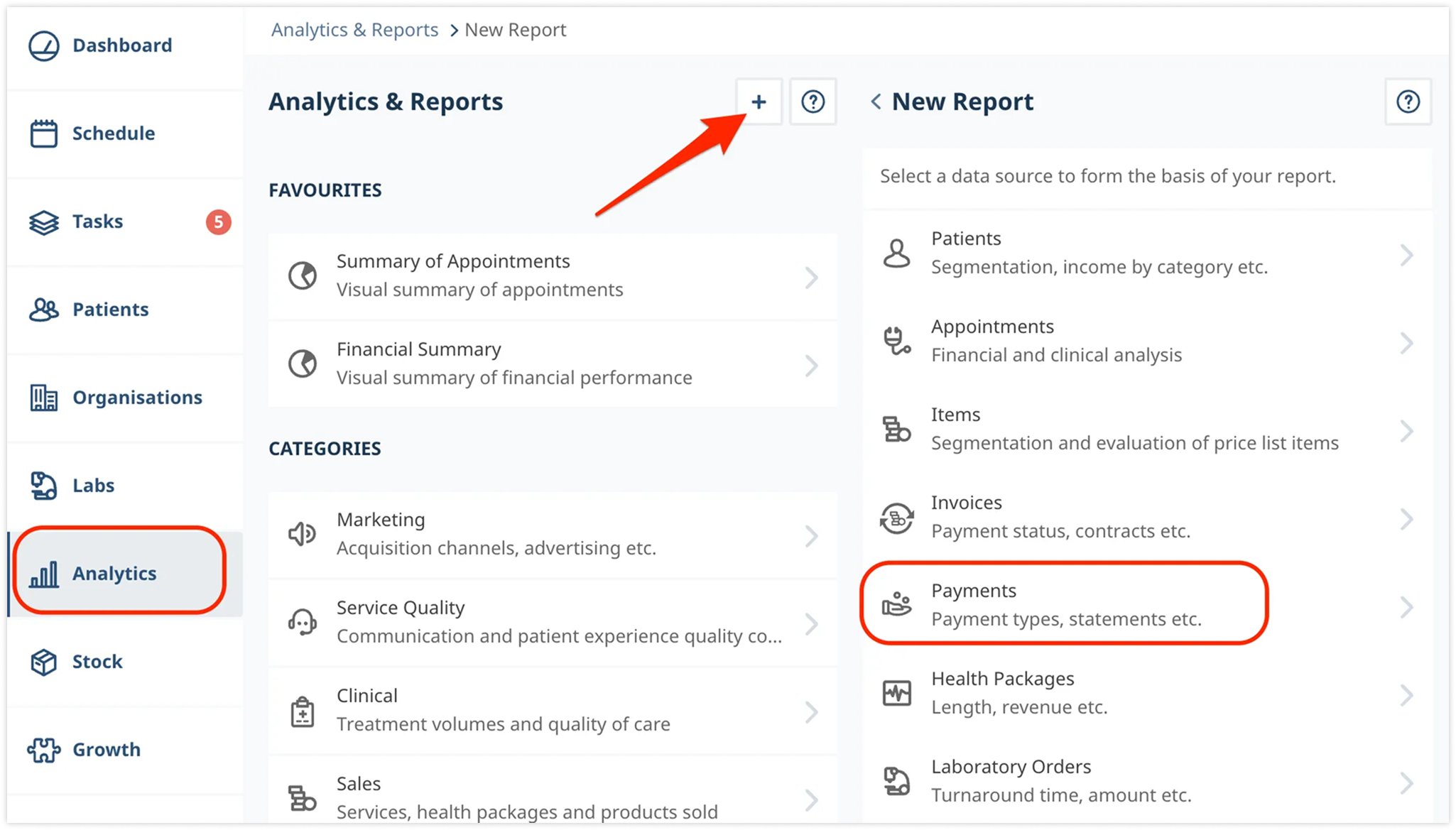
2. EHRs & Consultation Templates: Less Typing, More Patient Care
You didn’t become a doctor to fill out forms. Yet, that’s where most of your day goes. Electronic Health Records (EHRs) can make or break your workflow and your clinicians’ morale.
According to the AMA, lack of EHR efficiency is a leading cause of provider burnout. Don’t let that be you.
It’s better for you and your patients if you use automation to its fullest during appointments. Check if your current platform has the following benefits:
- Ready-to-use templates for common symptoms and diagnoses. For mental health professionals, questionnaires and psychometric score comparisons are important. Therapists appreciate auto-filling medical records with BNF and ICD-10 databases and so on.
Spend some time, pick the most used consultation notes template and optimize it with pre-set quick responses matching the answers patients usually give. That way you'll cut your charting time in half.
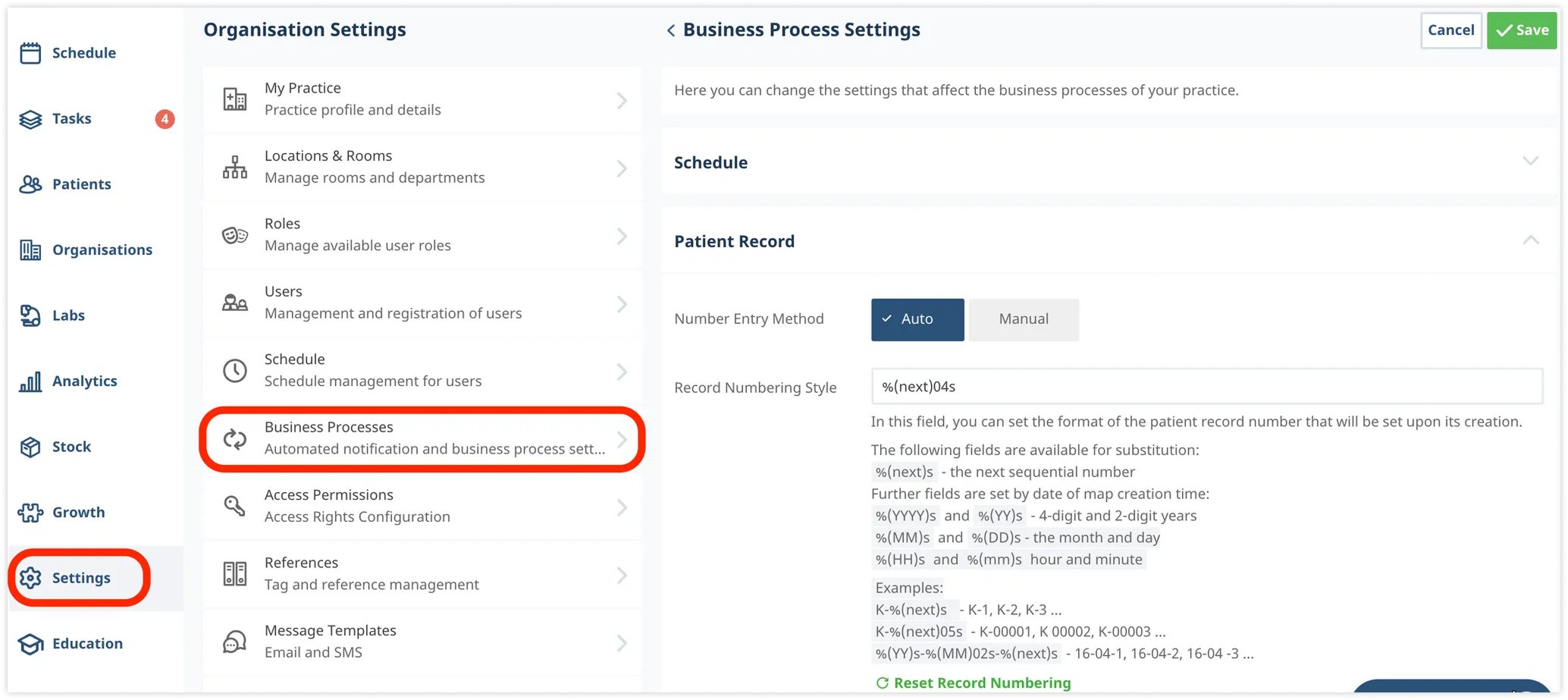
- Use autofill, dropdowns, and smart fields to reduce typing time. Even if you don't find the template you need, take the most appropriate existing template for your task and edit it. Health information systems have bulk editing options—use them if you are introducing a new specialty or specialist into your practice.
- Let patients view summaries securely online. Introducing a patient portal increases patient satisfaction with your services. If your patients have access to their personal account after booking online, where they can see their medical history, payments, and test results, they will not look for a new provider. Why would they?
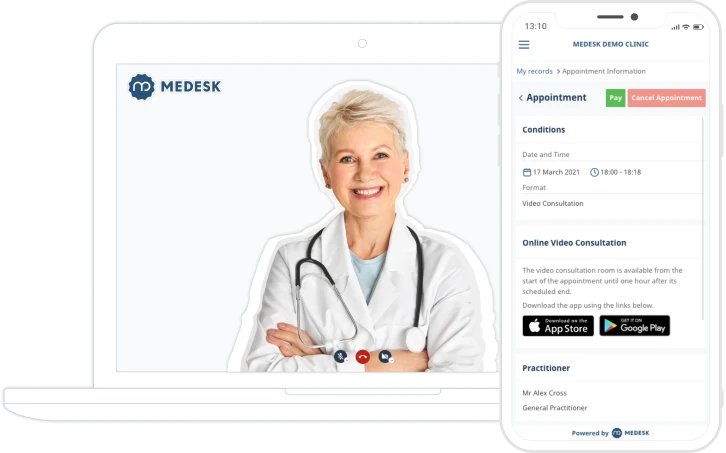
In an era where people are obsessed with biohacking and know the difference between ALT and AST in a blood test, health system specialists must incorporate this interest into their treatment.
Medesk helps automate scheduling and record-keeping, allowing you to recreate an individual approach to each patient, providing them with maximum attention.
Learn more >>3. Monitor Profitability like a Pro with a Financial Management Module
You can't improve what you can't measure. And you certainly can't scale what you don't bill correctly. If your system doesn't account for the entire financial flow, cash gaps are inevitable. To ensure that no payment is lost, utilize these features of your PMS:
- Automatically generate invoices and receipts post-appointment. It's especially important to activate this feature if you frequently conduct online consultations and don't physically interact with the patient.
Medesk has integration with Stripe and Xero accounting software that helps you monitor all payments: whether you have to issue refunds or a patient has only made a partial payment, all the information you need will remain safe and sound.
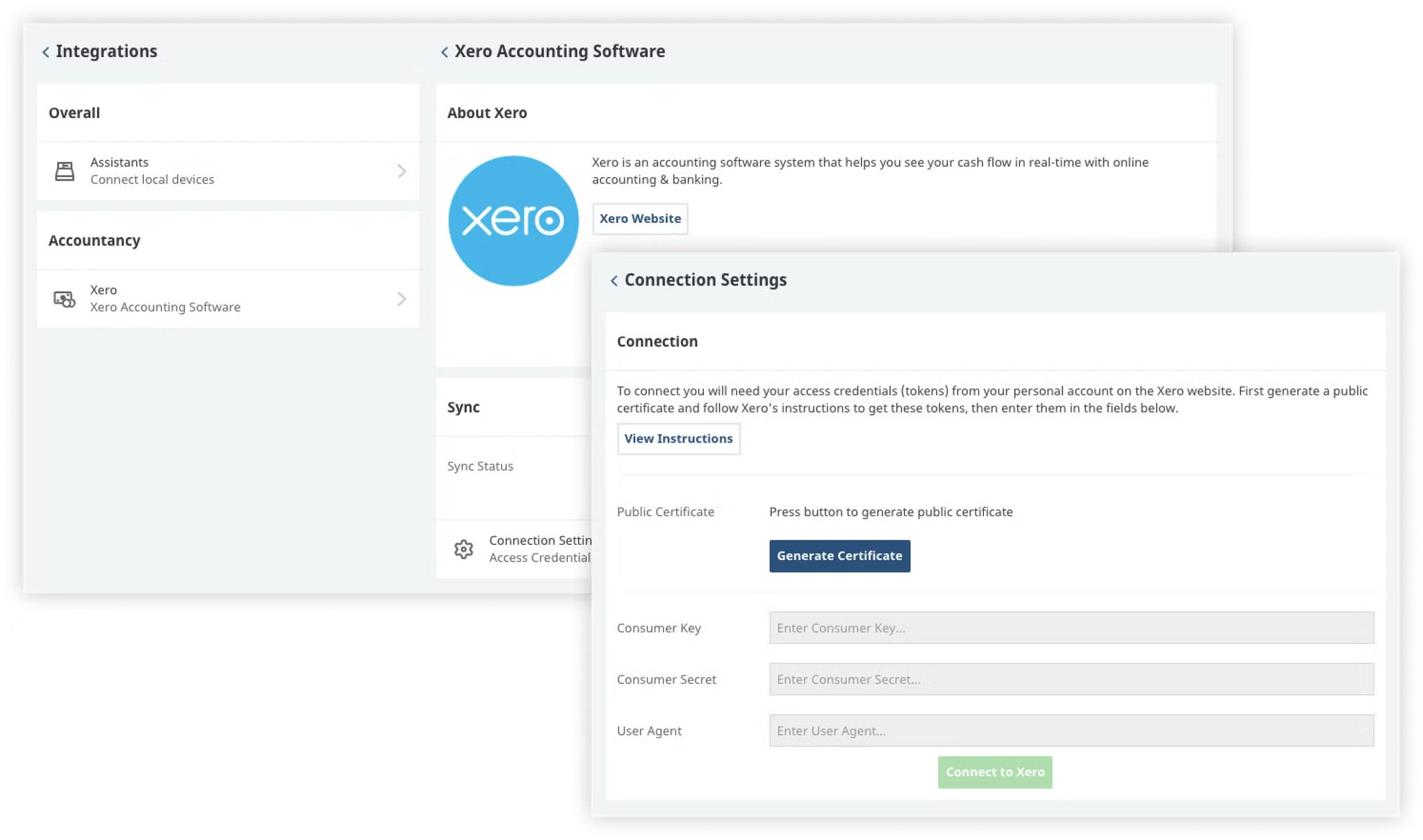
- Monitor profitability per service, doctor, or department with visual reports. The analytics modules in PMS differ greatly from each other: one vendor provides reports only in the form of tables, while others visualize the data, simplifying the perception of information.
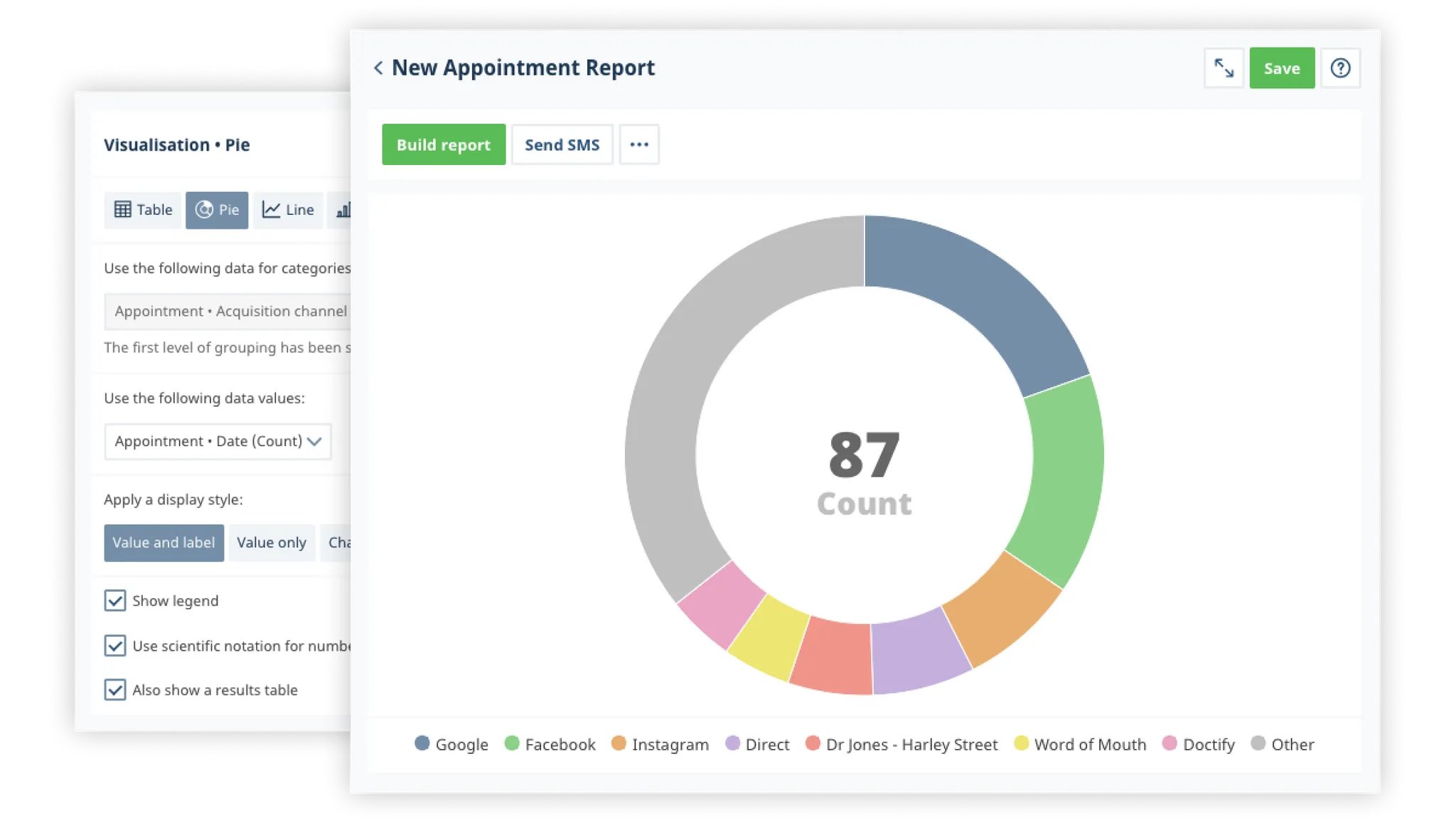
It is also worth paying attention to the depth of analytics: if possible, track the patients acquisition channels, the profitability of each speciality and the efficiency of the use of working hours. It may turn out that one doctor has a busy day job, while another one spends hours drinking coffee in the resident's room. If you notice such a trend, you need to look into it: a PMS with an advanced analytics module will do half of the work for you.
- Create payer-specific reimbursement reports for insurance companies and Medicare.
According to the Premier, nearly 15% of all claims submitted to private payers for reimbursement are initially denied.
Medical claims are vulnerable to fraud and abuse, such as billing for services not rendered, recoding or splitting services, duplicating or falsifying claims, and using false or stolen identities. The PMS system provides detailed reports on the status of claims, reasons for any denials, and payment trends. Throughout the process, you see the real-time updates on the claim's status and understand where each claim stands and can take action if needed.
Similarly, if billing inefficiencies have been a recurring issue, outsourcing medical billing services can help streamline revenue cycles and reduce administrative burdens.
Lower reimbursement costs = higher clean claim rate = lower operational expenses.
4. Integrate Calls, Messaging and Bots to Reduce Admin Time
Your receptionist shouldn’t be glued to a landline. Your patients shouldn’t have to wait on hold.
Fix it with smart communication tools:
- Record calls and tag them to patient records. You won’t need to install any extra software or buy any additional equipment. Call patients directly from the patient record within Medesk itself. All you have to do is click on their phone number and choose whether to call or send a text.
Connect IP telephony and redirect calls to your colleagues, block spammers and collect requests even outside working hours—the software will redirect such calls to your smartphone (if you are very fond of working even at home).
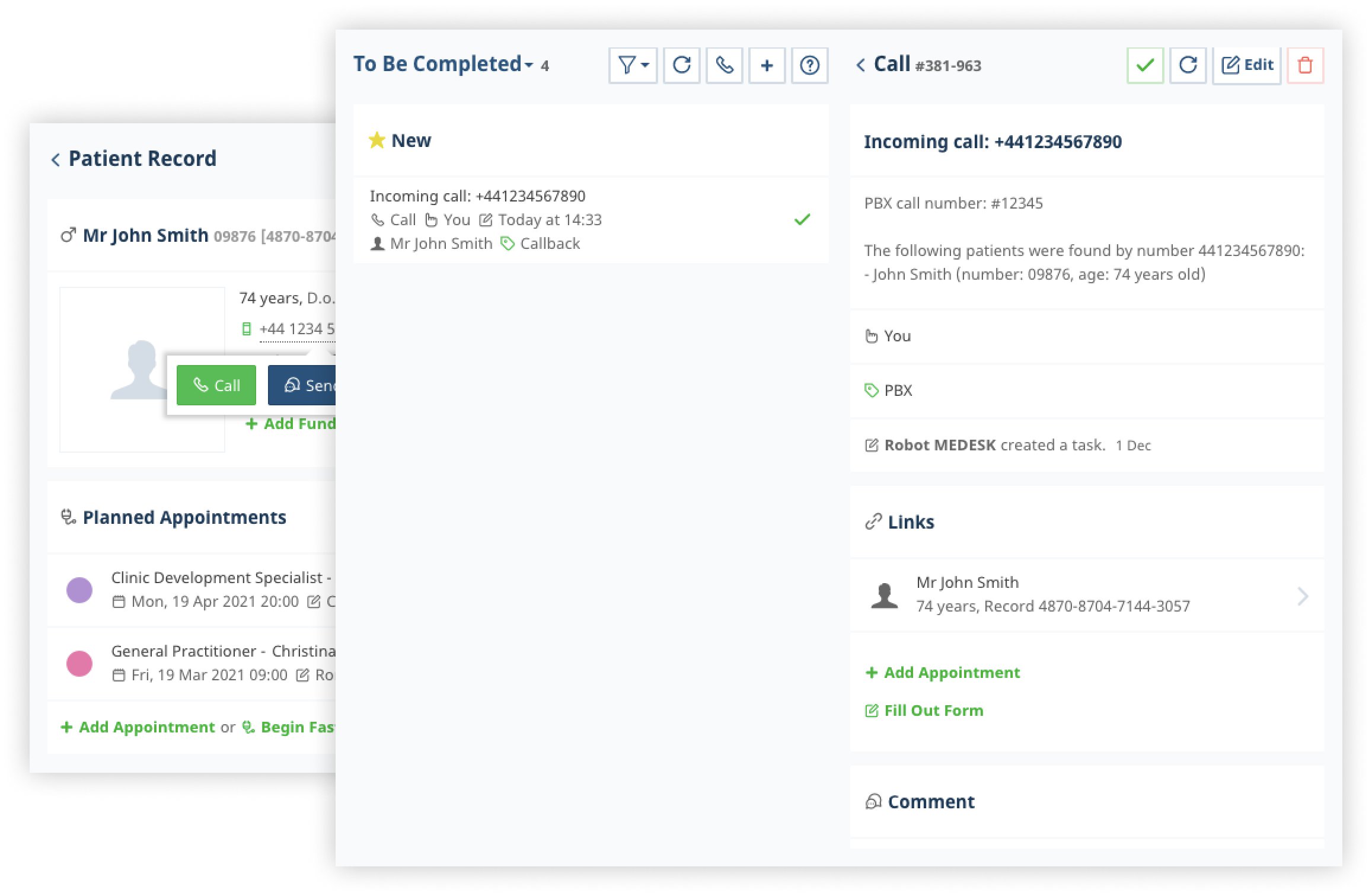
- Integrate WhatsApp, Telegram, or SMS communication right from your PMS dashboard.
In fact, upwards of 89% of consumers prefer to have access to texting their service provider.
Give them the opportunity to book an appointment through the portal or by texting you without taking a break from their daily routine. To make the process of communicating with your customers even easier, connect a Telegram bot:
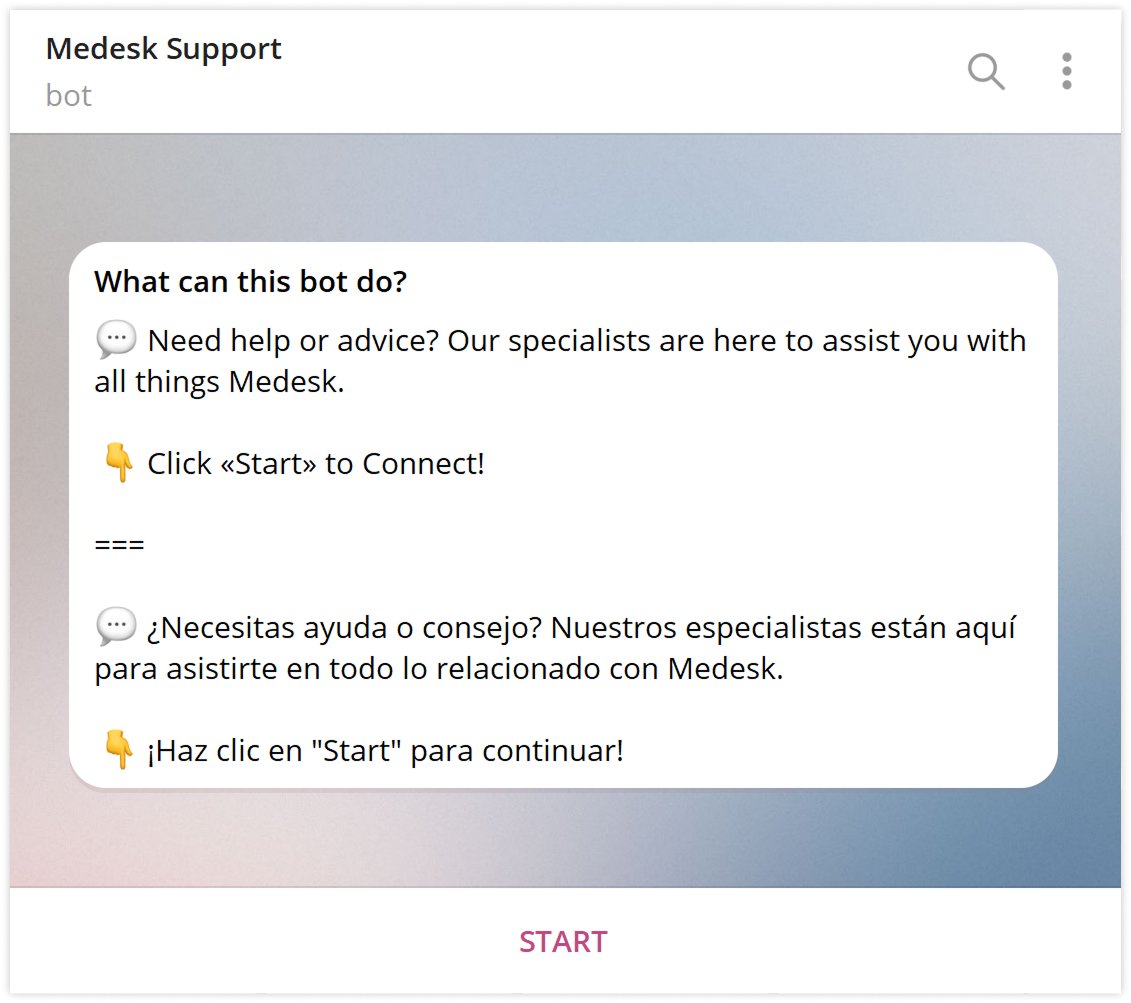
Modern practice operations depend on fast, traceable communication. Done right, this reduces admin errors, improves response time, and boosts patient satisfaction.
5. CRM: Don’t Just Store Contacts—Nurture Relationships
In a successful medical practice, your patients are your community. And your Customer Relationship Management (CRM) system should reflect that.
Make your CRM work for you:
- Create automated funnels for new patient onboarding, follow-ups, and loyalty programmes. Instead of sending a single welcome email, set up an onboarding sequence that gradually introduces patients to your medical office and services.
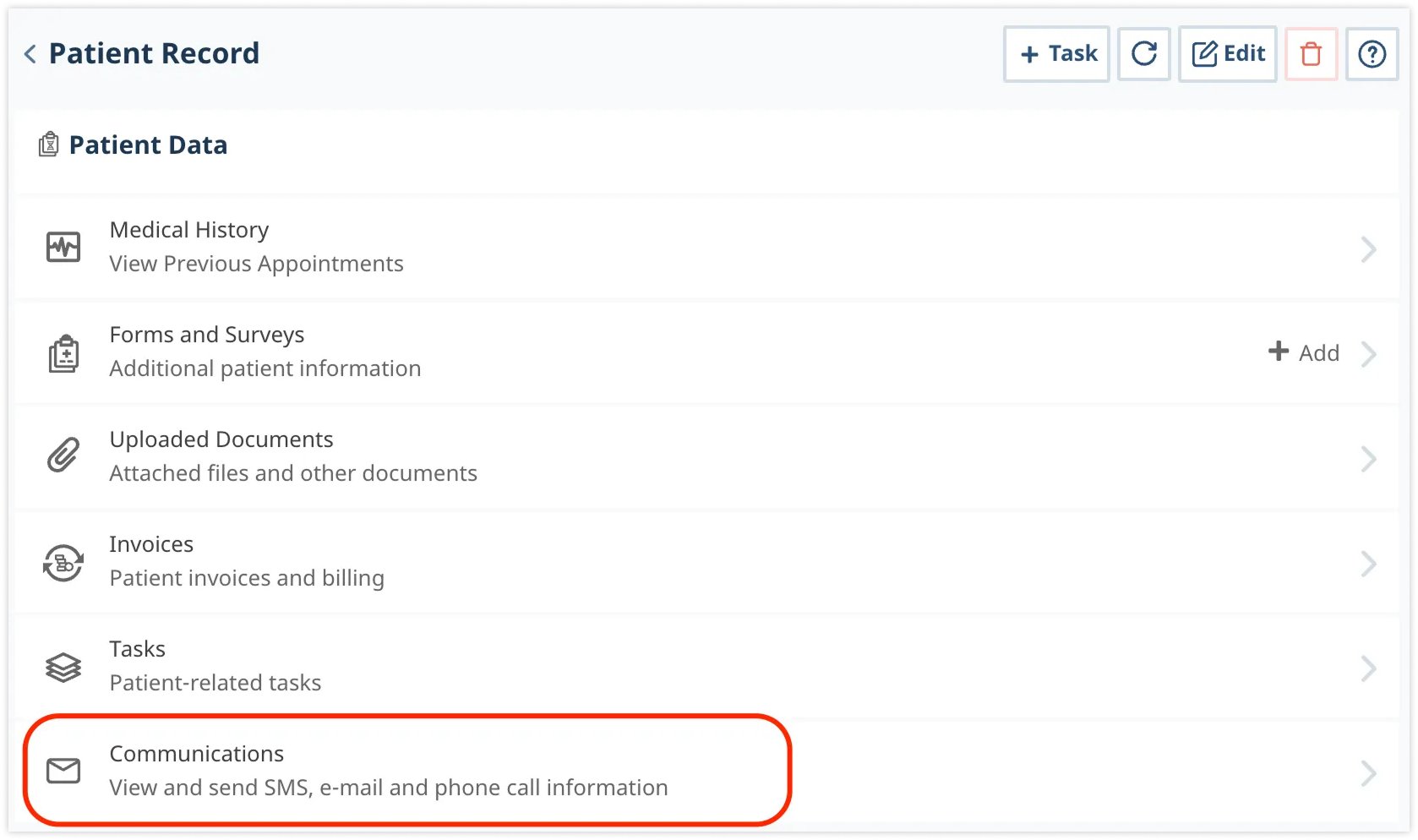
For example, send a welcome email on day 1 and then go on with short bios of their assigned clinician or curated articles or videos related to the patient’s visit type. On day 5 you can prompt early feedback using interactive forms—help identify friction in your patient care process.
- Trigger outreach campaigns like "It's time for your yearly screening." Preventive care is both a patient benefit and a business opportunity. Automated campaigns can be triggered by:
- Visit Date (e.g., "It’s been 12 months since your last visit").
- Age + Condition (e.g., women aged 50+ due for mammograms).
- Lab Results (e.g., abnormal levels requiring recheck).
Use the built-in patient timeline feature to track last visits. Set a rule that automatically creates a task or sends an SMS/email reminder based on time elapsed.
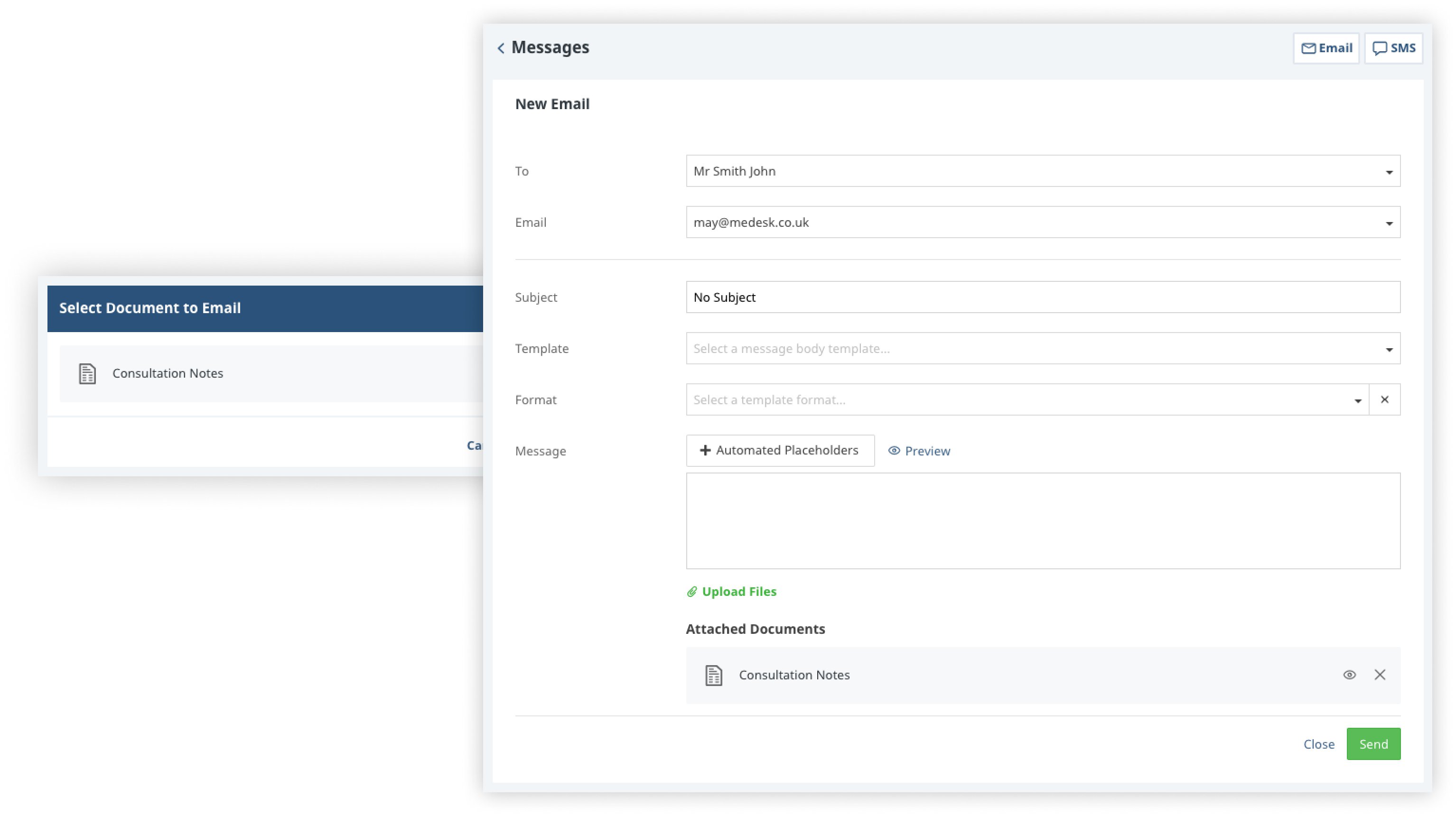
- Segment patients by health data, insurance provider, or visit frequency. Patient segmentation isn’t just a marketing tool—it’s a critical feature for tailored care and smart financial management in a modern healthcare practice.
Discover more about the essential features of Medesk and claim your free access today!
Explore now >>For example, patients with asthma can be grouped and notified during allergy season with self-care tips or offered discounted telehealth check-ins.
Some patients come monthly, others annually. Segment them by how often they engage with your clinic.
- Frequent visitors → Offer wellness memberships.
- Infrequent visitors → Send re-engagement campaigns.
- Missed appointments → Send educational content to rebuild trust.
Example message:
"Hey Julia, we noticed it’s been a while since your last appointment. We’d love to see you again—book a quick check-in today and get 10% off your next visit!"
6. Think of Telemedicine as a Separate Strategy
Telemedicine isn’t just a pandemic leftover — it’s a long-term revenue stream if used right.
Here’s how to turn telehealth from a reactive add-on into a core part of your business model.
- Offer separate telehealth slots in your schedule for better clarity. Many practices simply "squeeze in" virtual appointments wherever there’s a gap in the calendar. That’s a mistake.
Instead, create clearly labelled telehealth slots within your appointment scheduling module. Your PMS — like Medesk — should allow you to:
→ Set distinct calendars for in-person and virtual consultations.
→ Sync availability across multiple providers and locations.
→ Use colour-coded time blocks to show telehealth vs. clinic hours.
Clear scheduling eliminates confusion for both staff and patients. It also shows patients you’re serious about virtual care, not just offering it on the fly.
- Create packages that combine virtual and in-person care. Why limit your services to “either/or” when it comes to in-person and virtual care? Bundle them. Using your PMS’s pricing and service configuration features, you can:
→ Offer a monthly subscription that includes one telehealth visit and one in-clinic follow-up.
→ Design care pathways like post-surgical virtual check-ins followed by physical assessments.
→ Promote preventive care packages with quarterly virtual wellness consults and annual physicals.
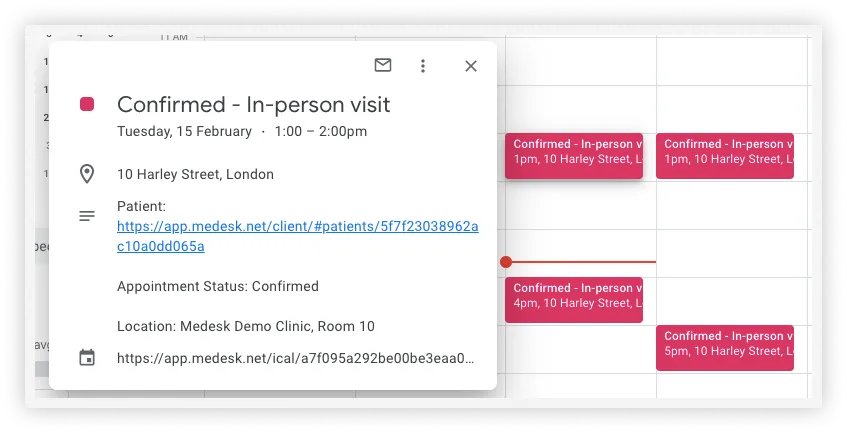
- Enable secure online payments linked to your teleconsultation booking. If someone books a telehealth visit, they should be able to pay right there — no chasing invoices, no awkward phone calls. Here’s how your practice management system can help:
→ Enable upfront payment for virtual slots before confirming the booking.
→ Automatically generate and email receipts, with entries logged into financial and EHR records.
Telehealth isn’t just convenient; it can improve access, reduce no-shows, and expand your practice reach beyond physical borders.
7. Automate Feedback to Improve Patient Satisfaction
Do you really know how your patients feel? If not, you’re missing out on a goldmine of insights.
Get real feedback with less effort:
- Trigger automatic feedback forms after visits. After a person finishes his telehealth consultation or in-person appointment, send him a branded, friendly feedback form directly to their email or via SMS.
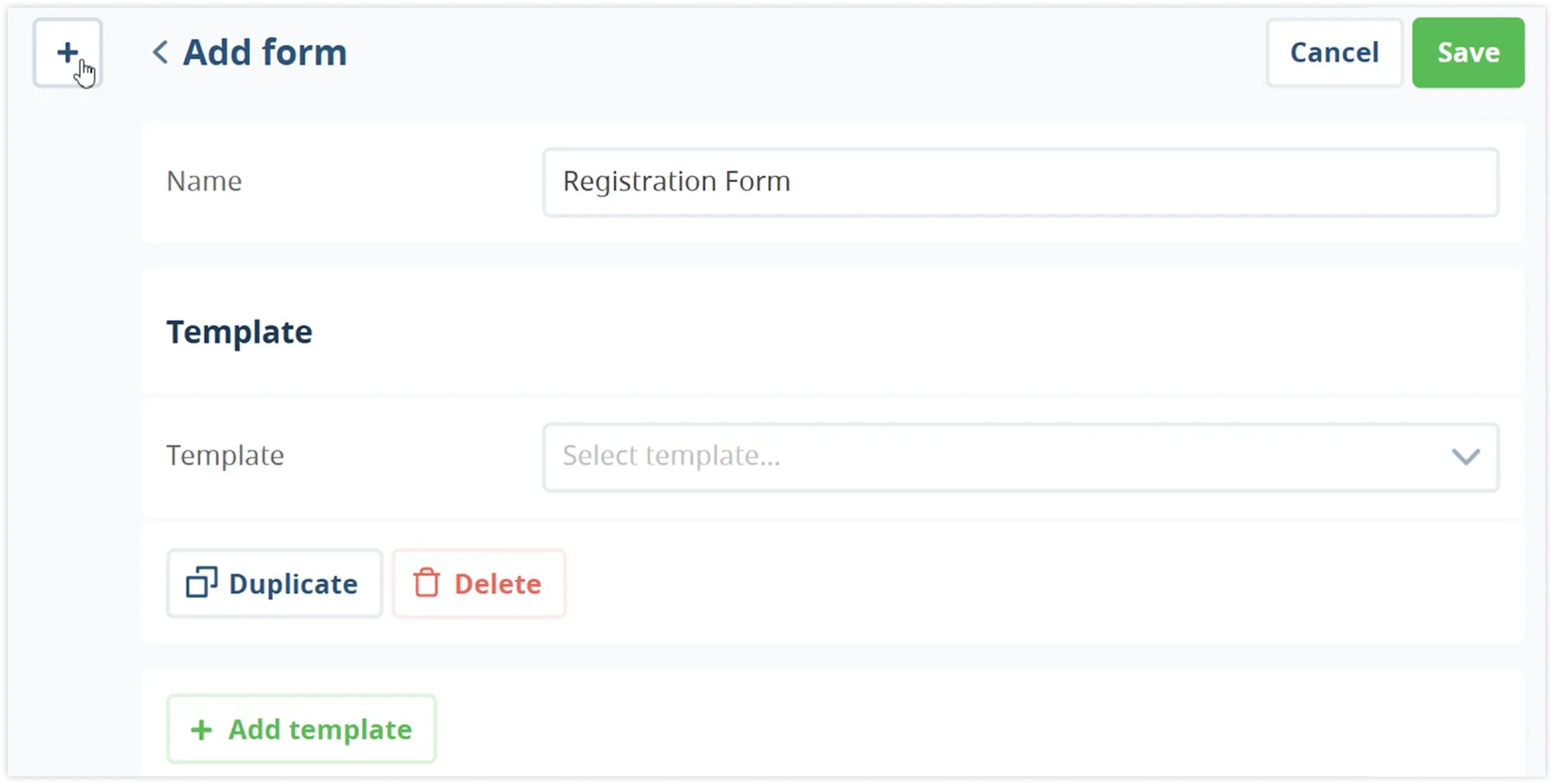
These forms are fully customizable and let you reduce patient churn.
- Push satisfied patients to leave public reviews. Let’s be honest—when patients love you, they usually don’t tell the world unless you ask.
That’s where smart practice management system automation kicks in again. You can segment happy patients—based on their feedback or Net Promoter Score—and send them a friendly nudge:
“Glad you had a great experience! Would you mind leaving us a quick review on Google?”
Tip: Make it as easy as possible—link directly to the review site, pre-fill their name, and say thank you in advance.
Here is a quick recap of the main functions you can add right now to your medical office management system:
| Feature | Upgrade Action |
|---|---|
| Online Booking | Add prepayment + geo-filters |
| EHR | Use templates, autofill, and patient portals |
| Billing | Automate invoices, track revenue per service |
| Scheduling | Use shift templates and smart resource allocation |
| Messaging | Integrate SMS/WhatsApp for reminders |
| Reporting | Automate KPIs and export visual dashboards |
| CRM | Build funnels, trigger outreach, segment smartly |
| Telehealth | Separate slots, combo offers, online pay |
| Feedback | Automate forms, NPS tracking, review push |
Stop Managing. Start Growing.
Using your practice management system to its full potential isn’t optional anymore. It’s the difference between:
- Being overworked or being organized.
- Barely breaking even or scaling profitably.
- Managing chaos or delivering world-class patient care.
Medesk offers every single feature mentioned here, plus personalized onboarding, webinars, and interactive support to get your team up to speed fast.
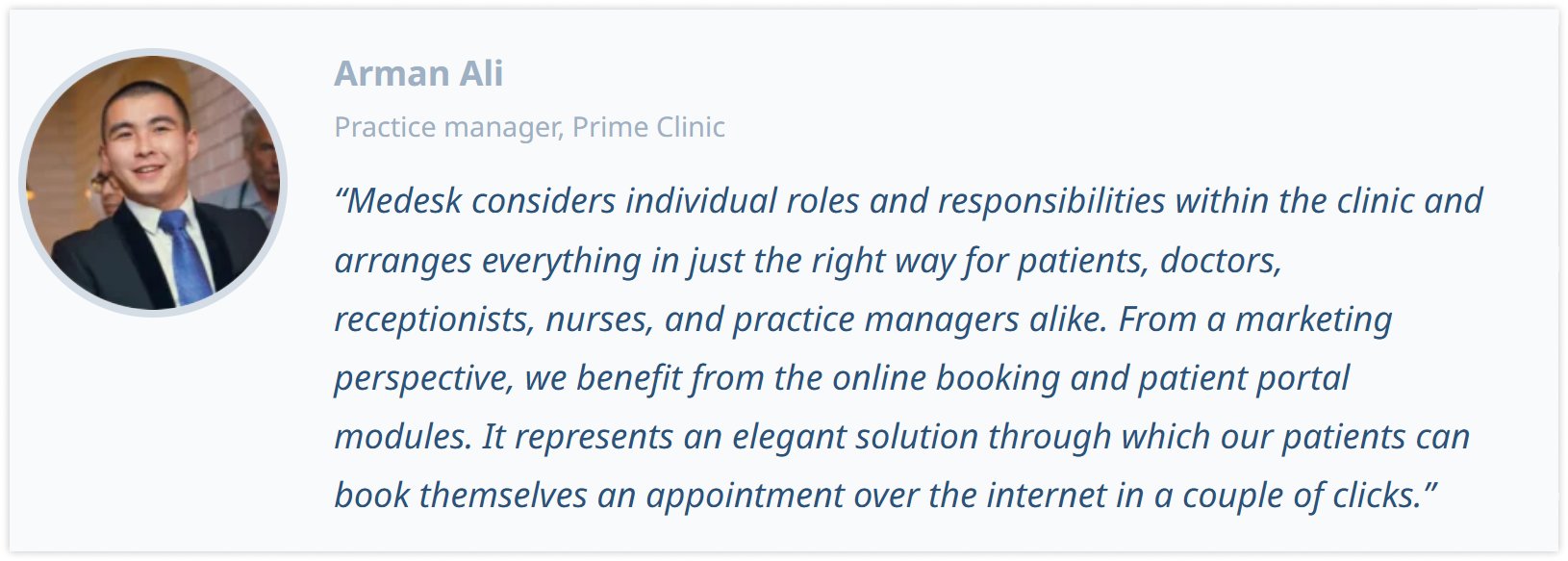
You can start free and explore how automation, smart dashboards, and deep integrations can transform your physician practice management in weeks, not years.
If you’re still unsure, remember: even if you're not ready to switch platforms fully, you lose nothing by exploring. Sign up for a free Medesk trial, and you'll:
- Experience full platform functionality from day one.
- Get a pre-loaded template pack based on your speciality.
- Receive onboarding help tailored to your workflow.
Start your free trial now and discover how easy and impactful smart medical practice management can be ↓


